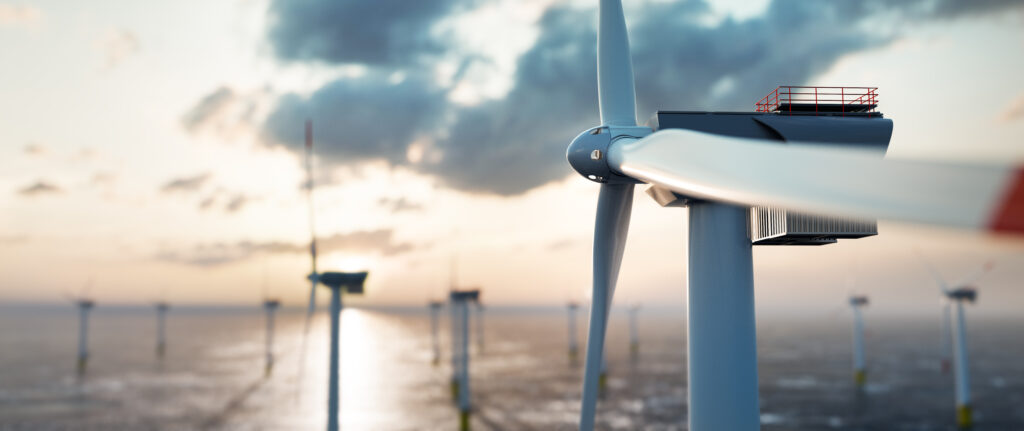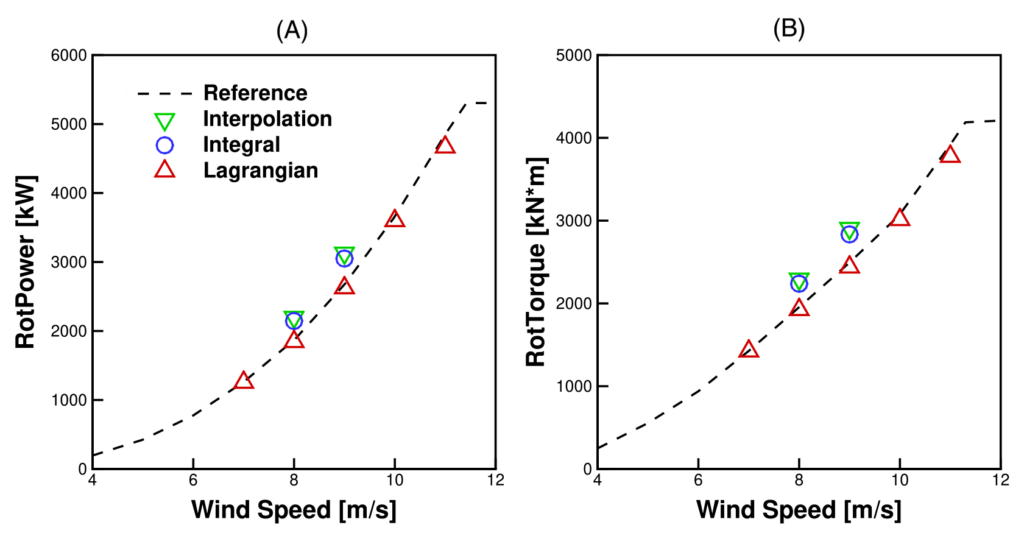
Author:
Jameil Kolliyil
Engineer, Documentation
Wind energy has emerged as one of the major types of renewable energy sources in recent times. In the United States alone, the past decade has seen a 15% growth per year in wind power capacity, making wind energy the largest source of renewable power in the U.S.1 And as the market for wind energy grows, wind turbines and farms are subsequently becoming larger (some of these wind turbines are over 100 meters tall!). With such large turbine structures, in addition to wake effects from other wind turbines, the effect of the atmospheric boundary layer (or ABL, which is the lowest part of the atmosphere directly influenced by the earth’s surface) also becomes significant. The turbulence in the ABL can affect the efficiency and lifetime of wind farms, and the wake flows from the farms can alter the structure of the ABL. So when designing and optimizing large wind farms, you have to consider the complex interaction between the farm and the ABL.
So the all-important question is whether computational fluid dynamics can help you design better wind farms. Can it? Well, the short answer is yes, but the biggest hurdle to performing full-scale CFD simulations becomes immediately apparent: the massive disparity in length and time scales. In a comprehensive simulation of such systems, you will have length scales ranging from millimeters, corresponding to the thickness of the boundary layer on the turbine rotor, to tens of kilometers, corresponding to the size of a wind farm. Simulations of this magnitude would be expensive and resource-intensive, to put it mildly. The industry has therefore turned to actuator models. These models replace the rotor blade with lines (actuator line model) or discs (actuator disc model) that impose body forces corresponding to blade loading on the flow field. Meanwhile, a three-dimensional Navier-Stokes solver is used to simulate the flow field. This circumvents the need for a fine mesh around the rotor blade while maintaining adequate refinement to capture turbulence and wake characteristics. Developed in 2002 by Sorensen and Shen2, the actuator line model (ALM) has gained popularity in recent years and has been extensively used in wind turbine simulations. The main challenges in developing ALM involve determining the relative velocity at each discrete point on the actuator line and deciding how to project the aerodynamic forces back onto the flow field. State-of-the-art ALM codes use an interpolation method (where velocity is interpolated from nearby fluid points to AL points) or an integral method (where a force projection weighted velocity integral is used to retrieve the free upwind velocity) for calculating the relative velocity. A Gaussian function is used for projecting the aerodynamic forces onto the fluid flow.

At Convergent Science, we’re constantly pushing the envelope and looking to improve existing models. Dr. Shengbai Xie (Principle Research Engineer at Convergent Science) published a research paper in which he employed alternate velocity-sampling and force projection functions. Instead of interpolating velocity from nearby fluid points, Dr. Xie’s approach used a Lagrangian-averaged velocity sampling technique. Instead of a Gaussian force projection function, he used a piecewise function3. He implemented these modifications in CONVERGE CFD software and simulated a 5MW NREL (National Renewable Energy Laboratory) reference wind turbine4. Figure 1 shows steady-state rotor power and torque predictions from other ALM implementations, Dr. Xie’s approach, and reference curve from Jonkman et al., 20094.

As you can see in Figure 1, Dr. Xie’s novel approach produces a better match to the reference curve when compared to the interpolation and integral methods. Dr. Alessandro Bianchini’s Wind Section group at the University of Florence has already employed this new approach to simulate a DTU 10 MW reference wind turbine; Figure 2 shows an animation from their work. You can find more information about the new approach and detailed comparisons with other ALM implementations in Dr. Xie’s research paper here.
CONVERGE’s trademark autonomous meshing, Adaptive Mesh Refinement (AMR), and smooth handling of moving geometries make it uniquely suitable for simulating wind turbines. Check out our wind turbine webpage to see how CONVERGE can bolster your wind turbine simulations!
[1] Wind Energy Technologies Office, “Advantages and Challenges of Wind Energy”, https://www.energy.gov/eere/wind/advantages-and-challenges-wind-energy, accessed on Aug 10, 2021.
[2] Sorensen, J. N., Shen, W. Z., “Numerical modelling of wind turbine wakes,” J. Fluids Eng., 124, 393-399, 2002. DOI: 10.1115/1.1471361
[3] Xie, S., “An actuator-line model with Langrangian-averaged velocity sampling and piecewise projection for wind turbine simulations,” Wind Energy, 1-12, 2021. DOI: 10.1002/we.2619
[4] Jonkman, J., Butterfield, S., Musial, W., Scott, G., “Definition of a 5-MW reference wind turbine for offshore system development,” NREL, 2009, https://www.nrel.gov/docs/fy09osti/38060.pdf


